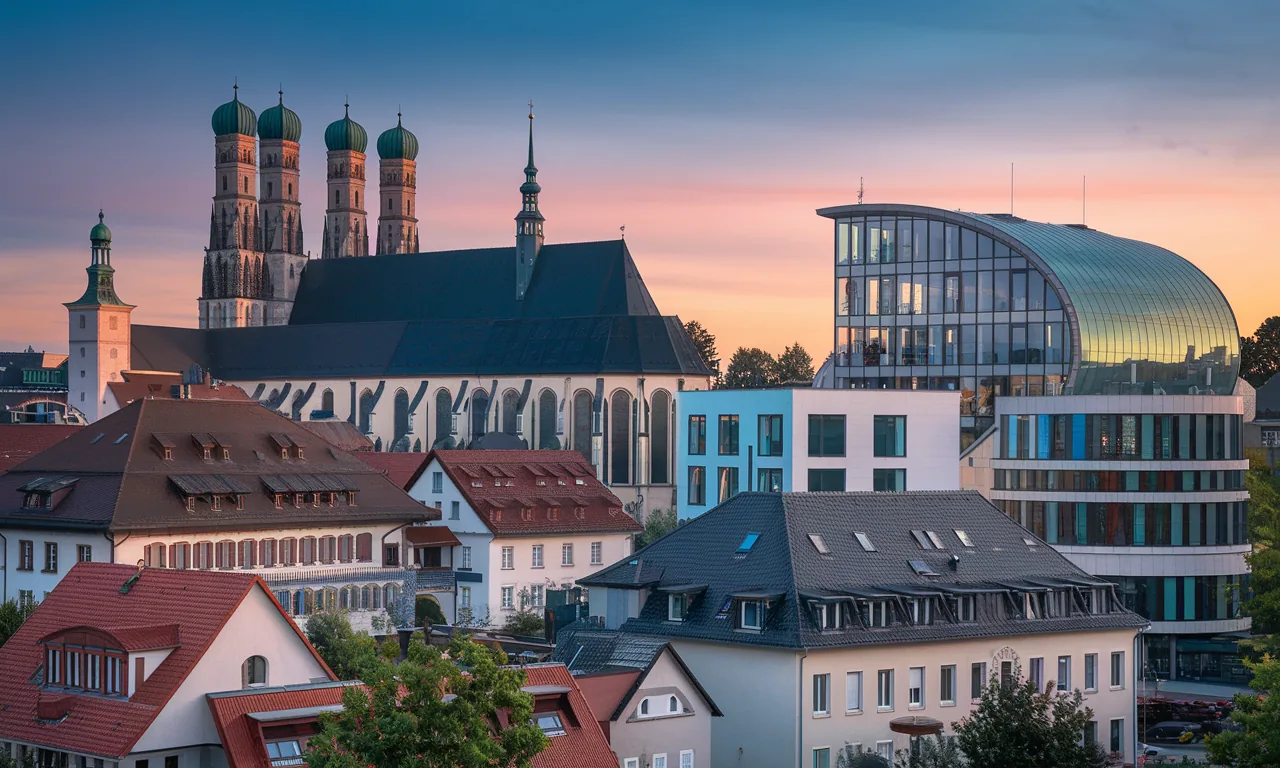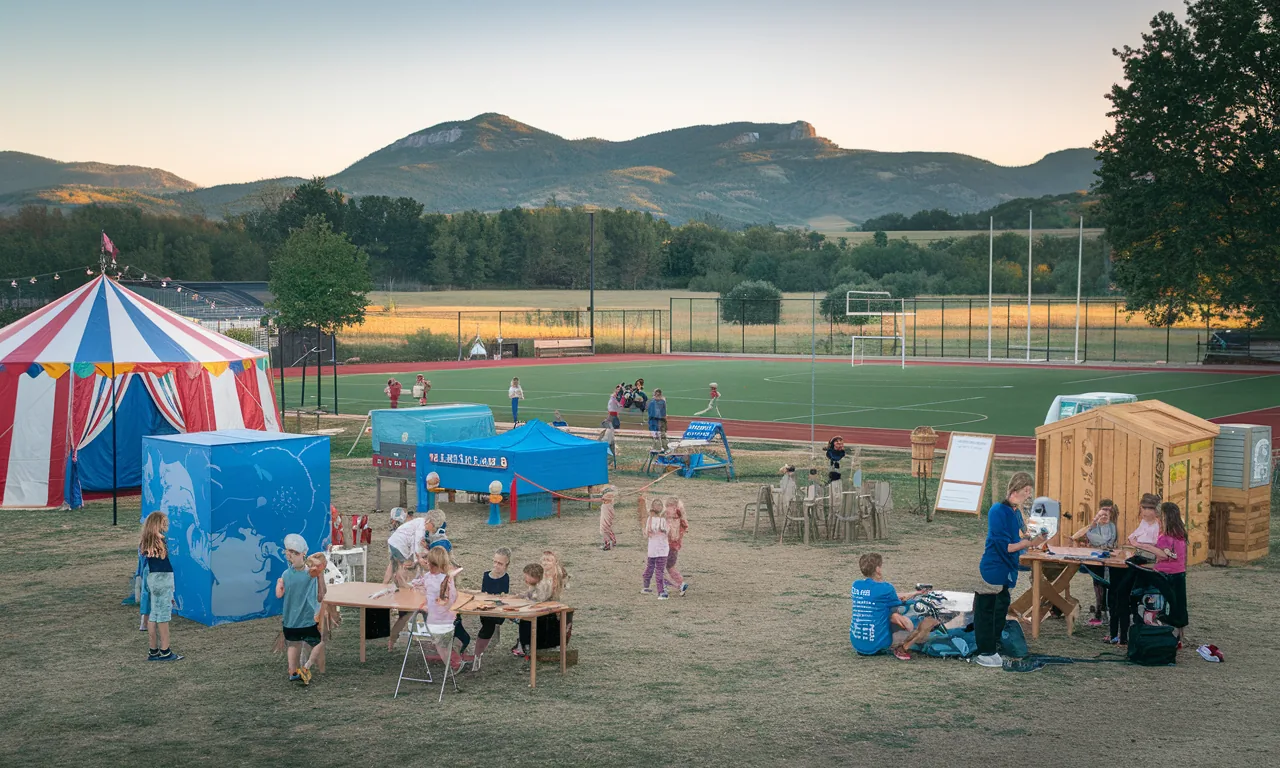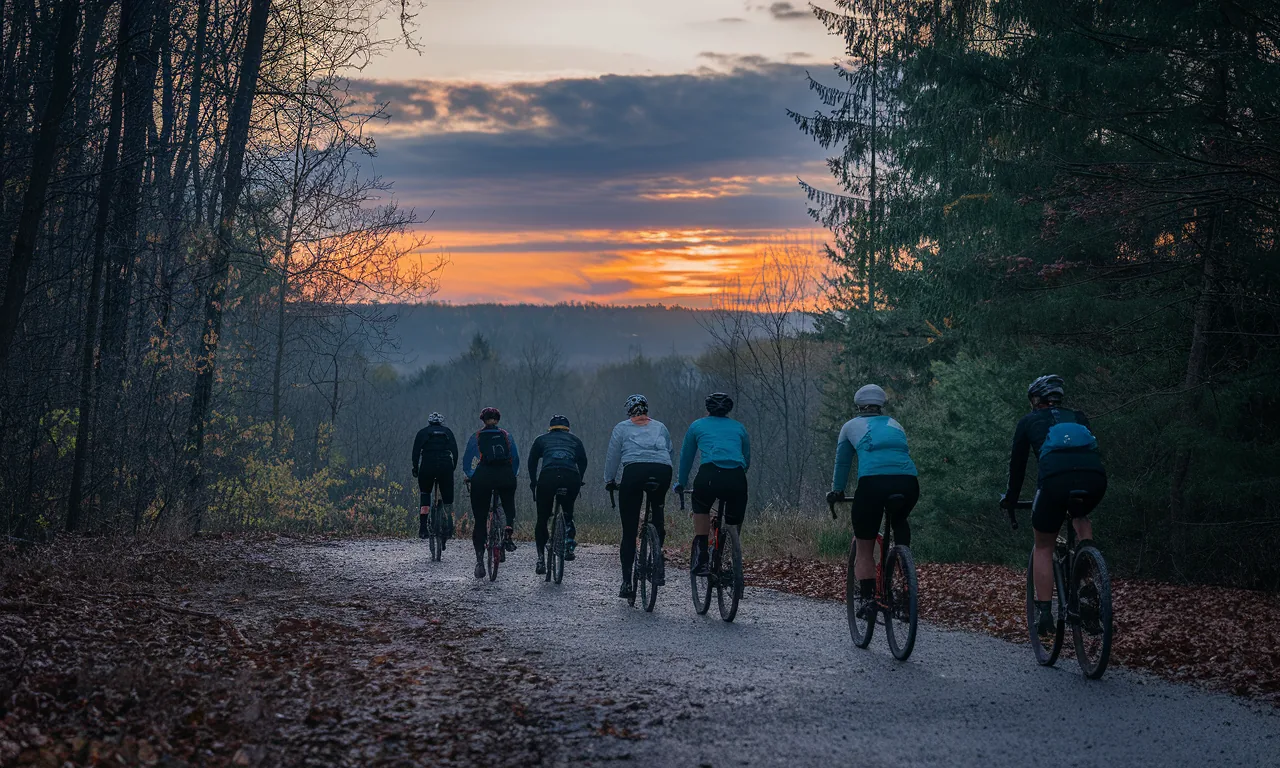Time Travel Traunstein: Maxplatz, Jackl Tower & Railway Viaduct
Time Travel through Traunstein: Old Photos, Stories & People
How does a city change—and what remains? Old photos from Traunstein open up the view to transitions between eras, from city fire and reconstruction to post-war modernity and today’s debates about urban spaces.
Introduction: Learning to Read What Pictures Tell
Imagine you are standing at Maxplatz, looking at facades that have seen generations. Two details catch your attention: Why is the Jackl tower missing in a panorama from 1883? And why are skiers gliding through Scheibenstraße in a winter shot from 1942? The answers lead into Traunstein's visual memory—and show how historical images help us understand the present.
This journey through time connects places, people, and images—from the railway viaduct to the parish church—and traces how Traunstein, as an old salt city in the context of the Rupertiwinkel, has grown. For both locals and visitors, this unveils a panorama that brings together Alpine peaks, everyday life, and a culture of remembrance.
Leaps in Time at Maxplatz and Jackl Tower
A key moment in this photographic story is the locally noted project "Leaps in Time" (2012): an exhibition in the city museum, accompanied by a photo book. The principle: historical photos are precisely re-photographed and shown side by side. Curation of this kind often reviews very large image collections; exemplary motifs make the transformation of the urban space visible.
Striking examples include a panorama from 1883—without the clearly recognizable Jackl tower at the time—the Parish Church of St. Oswald with an emergency roof after the 1851 city fire, and a winter shot of the Scheibenstraße from 1942 showing skiers. These motifs tell of resilience after fire disasters, everyday improvisation in wartime, and the long thread by which architectural features—like the Jackl tower—are inscribed into the collective visual memory.
The accompanying photo book is listed bibliographically with 96 pages (hardcover, ISBN 978‑3‑95400‑040‑1); according to the description, it combines 44 historical photos with current comparison shots. In parallel, there is a local reference to a "documentation of 65 streets." This discrepancy cannot be conclusively clarified without reviewing the publication; the Then–Now method for making the urban space legible is considered verified.
Why is the Jackl tower missing in the 1883 panorama?
- Image section/perspective: The tower may have been outside the image frame or hidden by development/silhouettes.
- Construction status: After fire and renovation phases, heights, additions, or roof shapes may have been temporarily altered.
- Technical limitations: Early panoramas had exposure and sharpness limits; details blur.
Tip: Compare several contemporary shots and supplement with heritage and building records (see sources).
Postcards: Railway Viaduct, Scheibenstraße, Parish Church
Historical postcards were the "social media" of their time. In Traunstein, recurring motifs condensed over decades: Maximiliansplatz (Maxplatz), Bahnhofstraße, the railway viaduct, and the Church of the Holy Cross. Series with dates exist from 1898, 1899, 1902, 1914, 1931, 1932, 1939/40, 1951, 1956/58 and 1968. This sequence makes change visible: from horse-drawn carts to a car city, from cobblestones to modern surfaces, from winter town images to summer festivals.
- Parish Church of St. Oswald: Older cards emphasize the ecclesiastical dominance; more recent ones focus on street spaces, new buildings, and traffic.
- Railway viaduct: An icon of technological progress and a symbol of connection to the world.
- Scheibenstraße: A time capsule of everyday life: In winter 1942, skiers glide by—in the 1950s/60s, rising mobility takes center stage.
- Altersham and outskirts: Village images, path relationships, and later interconnections show growth beyond the historical center.
District, Rupertiwinkel, and Alpine Peaks at a Glance
Traunstein is not an island. In regional image collections and photo books about East Chiemgau, the Rupertiwinkel, and the Chiemgau Alps, the city appears as a traditional salt city with cultural heritage and urban offerings. The view from the city center to the Alpine peaks, the proximity to lakes, and the role as a supply and education center frame the city's identity.
The wide angle helps to read old photos: Alpine backgrounds around 1900, post-war modernity as a response to new mobility, population growth, and tourism—the cityscape becomes a topography of transitions between city and country, valley and mountain, work and recreation.
Within the district context, historical routes and trading spaces come into focus. Salt, markets, and administration shaped power structures for centuries—visible in buildings, squares, and paths. Old photos are like footnotes in stone.
Altersham, Barracks Area, and a City in Transition
Beyond the postcard idyll, the city tells stories of upheaval. The barracks area stands for transformation, as in many cities: from military use via interim phases to civilian reuse. Aerial photos, site plans, and photo series document repurposing, de-densification, or new buildings—traces that remain readable in path routes and rows of trees.
Places like Altersham illustrate how power structures, ownership, and parish assignment previously shaped space and everyday life. The parish church marks religious and social centers; administrative history is reflected in field boundaries, farmsteads, and place names.
As a salt city, Traunstein weaves a network of storage sites, paths, and squares around Maxplatz. This explains why markets are where they are—and why panoramas repeatedly show the same lines of sight.
Research, Remember, Share: Paths into the Photo Archive
Your own journey through time begins today online and on site. The following resources offer freely accessible or searchable collections:
- bavarikon: Cultural portal of Bavaria with historical photographs and postcards of Traunstein.
- Bavarian State Library – Digital Collections: Extensive map and image stocks; sortable by places and motifs.
- German Digital Library / Archive Portal-D: Meta-search across institutions (including Bavarian archives and museums).
- Monument Atlas Bavaria (BLfD): Official monument data as context for building and usage history.
- Historical Lexicon of Bavaria: Well-founded overview articles on city history and events (e.g., city fire of 1851).
- Bibliographies/catalogs: References to local photo books (e.g., the "Leaps in Time" volume via the German National Library).
Step-by-Step to Your Own "Leaps in Time" Series
- Select anchor points: Maxplatz, parish church, railway viaduct, Scheibenstraße.
- Reconstruct the location: Match the elevation and viewing direction of the old shot; pay attention to vanishing lines.
- Align accurately: Straighten verticals in the viewfinder; use the same focal length (smartphone: 24–28 mm equivalent).
- Note details: Paving, signs, tree tops, facade lines—and exact metadata (source, year, photographer, place found).
- Link sources: Contextualize the photo with monument data, newspaper reports, or council records.
- Share and review: Show findings to family, neighbors, or the local heritage association—corrections welcome.
Note on ambiguities: If information (e.g., number of streets documented in the volume) varies in publications, note both versions with sources and specify the uncertainty until the primary source is available.
Why These Images Matter Today
Old photos are both a compass and a mirror. They help to see debates about development, traffic, or use—for example at the barracks site—in longer lines. They show how urban quality arises: when historical substance is preserved and space for something new is created. And they open our eyes to what makes cities strong: people who look, interpret, and share.
Traunstein stands as an example for the Rupertiwinkel: the dialogue between past and present is not a luxury but the foundation for an intelligent future. From the Jackl tower to the railway viaduct, from Altersham to the horizon of the Alpine peaks—the city tells its story in pictures. We only have to read them.
Conclusion: The journey through Traunstein is an open project. Whether in exhibitions like Leaps in Time, in photo books, in the archive, or in the private album: making the past visible strengthens the understanding of today. And maybe the next time you cross Maxplatz you’ll discover a detail that only shows its significance in comparison—a piece of stone, a line in the plaster, a shadow that belongs to history.
Sources and Further Reading
- bavarikon – Search “Traunstein” — Bavaria’s cultural portal, historical photos and postcards (accessed 2025-11-13)
- Bavarian State Library – Digital Collections: “Traunstein” — Postcard/photo collections (accessed 2025-11-13)
- German Digital Library – Search “Traunstein” — Meta-search across museums/archives (accessed 2025-11-13)
- Archive Portal‑D – Search “Traunstein” — Cross-archive research (accessed 2025-11-13)
- Monument Atlas Bavaria (BLfD) — Official monument data, context of Jackl tower/parish church (accessed 2025-11-13)
- Historical Lexicon of Bavaria – Traunstein — Overview of city history, incl. city fire 1851 (accessed 2025-11-13)
- German National Library – Catalog search: ISBN 978‑3‑95400‑040‑1 (“Leaps in Time Traunstein”) — Bibliographic record of the photo book (accessed 2025-11-13)
Citation note: Dates and numbers are based on published catalog/portal entries. If information differs, variants are labeled as such.




